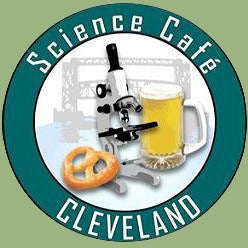Science Café Cleveland presents
"The Metabolism of a Computer Mouse"
MAY 10, 2010
FEATURING:
Dr. Daniela Calvetti (Dept. of Mathematics, CWRU)
Dr. Joseph LaManna (Dept. of Physiology & Biophysics, CWRU)
EVENT INFORMATION:
Never underestimate the power of a computer mouse when it comes to understanding metabolism. A lot of advances in the understanding of metabolism have been made thanks to lab mice, but their electronic cousin, tail plugged in the computer, is not less amazing in that regard, especially when it comes to human brain metabolism, which is particularly fascinating and extremely difficult to study in the midst of its functions.
Brain is not the first organ which comes to mind when thinking about metabolism, playing second fiddle to heart and muscles. The brain, which very efficiently accomplishes all its work on an energy budget of 15 Watts, is fuelled by the highly controlled combustion of sugar with oxygen. The mechanisms that control this process are known in only a rudimentary way, based on what has been gleaned from more accessible organs and bench top biochemistry. And since human and mouse brain are remarkably similar is some sort of way, that’s where the little lab rodent enters the scene.
But the brain functional unit, the “neurovascular unit,” is composed of the tiny processes of at least 3 main cell types - neurons, glia, and endothelial cells - which contribute unique properties to energy production and use. The neurovascular unit cannot be studied in the intact brain using contemporary methods (not even mouse brain), therefore we must rely on computer models to guide in interpretation. And that’s where the computer mouse becomes the primadonna, charting the possible routes substrates take to provide energy for various cerebral functions. Beyond adding to the knowledge base about brain function, computer models of metabolism allow us to derive better strategies for pre-conditioning and neuroprotection in order to counter pathologies that are associated with cerebrovascular diseases such as stroke and dementia, and to bolster the brain’s ability to withstand these insults despite the increasing vulnerability that accompanies normal aging.
Brain is not the only organ whose metabolism can be better understood with the help of a computer mouse. In fact, a lot of the signaling mechanisms orchestrating the functioning of cells in our body remain to be fully understood. Among the many questions which are presently being investigated with the aid of computational models are the metabolic differences between a sober and a drunken liver, and what the key pathway in adipose tissue is that decides the fate of our waistline.
EVENT DETAILS:
Date: May 10, 2010
Time: Drinks start at 6:30 PM, discussion starts around 7:00 PM
Location: Tasting Room, Great Lakes Brewing Company (2701 Carroll Ave, Cleveland)
![]() Download a flyer to post at your office!
Download a flyer to post at your office!






